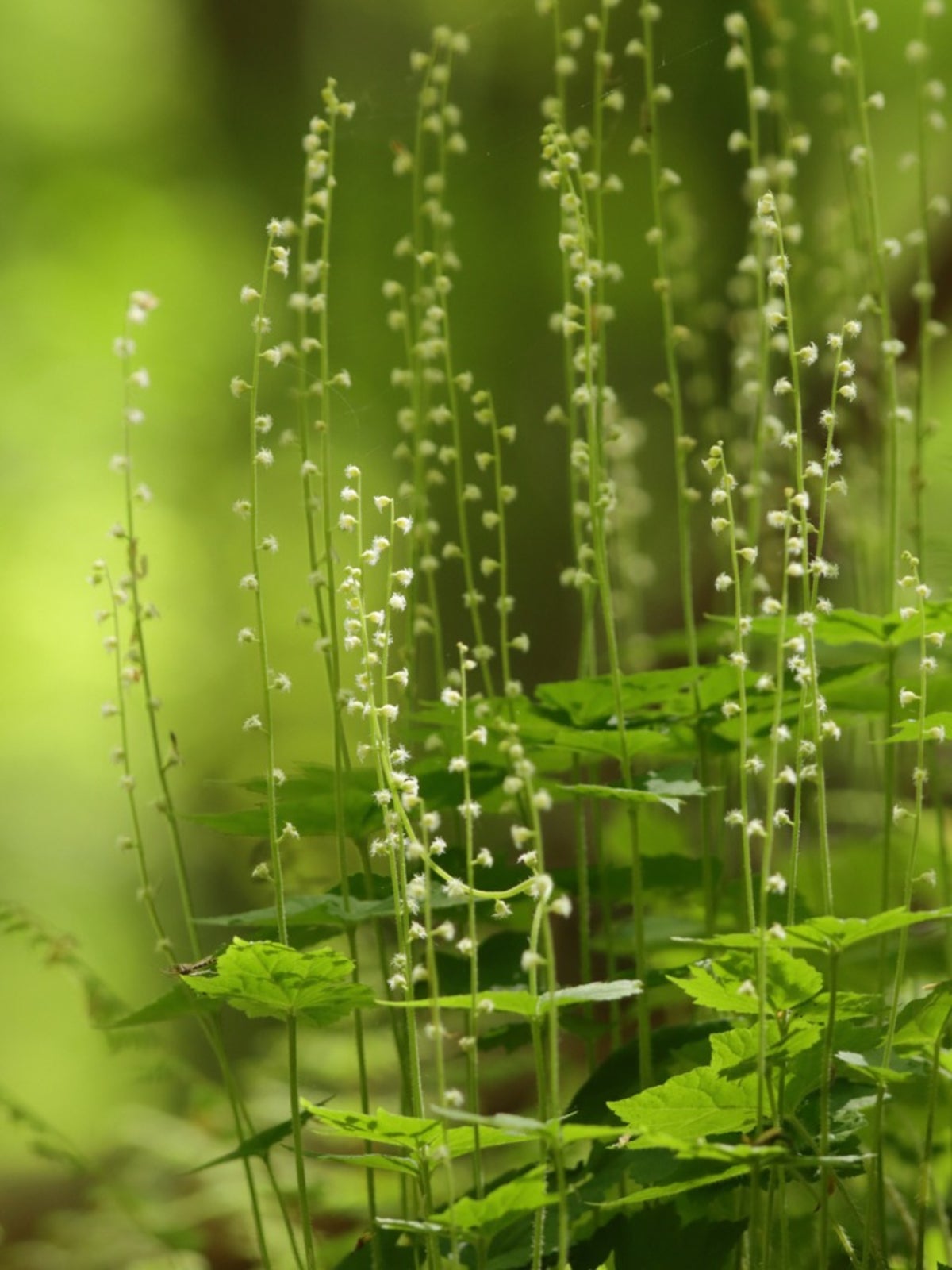About Bishop's Cap Plants: Tips For Growing Bishop's Cap Ground Cover


Perennials are the gift that keeps on giving year after year and native varieties have the added bonus of blending into the natural landscape. Bishop's cap plants (Mitella diphylla) are native perennials and can be found wild around North America, primarily distributed in temperate regions. What is bishop's cap? Read on to learn more.
What is Bishop's Cap?
This delicately lobed woodland plant pops up in spring and blooms soon after with little white cup-like flowers. The species is an easy-to-grow addition to a native landscape and bishop's cap ground cover will produce an eruption of dainty leaves and charming scented bells. Not only do native species like bishop's cap fit into the landscape more easily than exotics, but they are easier to maintain. This is because the conditions they are used to thriving in are already provided. The perennial has 6 to 18 inch (15 to 45 cm.) stalks with alternate and infrequent heart-shaped, slightly serrated leaves. The stalk rises from a base rosette and produces late spring blooms. The foliage is slightly hairy and the little flowers have a fringed appearance. The origin of the name is the most interesting bishop's cap information. Fruits emerge in summer and resemble a miter headdress, or bishop's hat.
Bishop's Cap Plants Use in the Landscape
These wonderful little native plants produce a mass of tender foliage and snowflake-like blooms. They produce best in dappled light with protection from full midday sun but can tolerate shade conditions. When allowed to fill in an area, they make an interesting spring ground cover. Bishop's cap ground cover should be cut back in fall for the best display in spring. This allows fresh new stems to grow and forces more compact growth. Tuck some of the elegant stalks in among other semi-shade perennials, such as astilbe or even hosta. They are ideal on hillsides protected by trees or in rocky areas where sunlight is strongest in the morning.
How to Plant Bishop's Cap
Chose a location with partial sun where the soil is rich in organic matter. Leaf litter provides rich mulch for the plants. If you can get starts, set them into the ground in early spring and keep them moderately moist until the plants establish. Bishop's cap plants also produce abundant seeds, which if collected, should be started indoors. An interesting bit of bishop's cap information is its ability to self start from rhizomes. However, these starts are generally just vegetative and form only stalks and leaves, producing no blooms.
Care of Bishop's Cap Plants
These plants will do the majority of their growth in early spring, when rains are at their peak. As a native plant, they require very little care once established and will bloom year after year with no extra effort on the gardener's part. The usual garden pests and diseases may affect the plant, but the established patch of bishop's cap is normally able to withstand minor problems with no ill effect on the overall vigor of the perennial.
Sign up for the Gardening Know How newsletter today and receive a free copy of our e-book "How to Grow Delicious Tomatoes".

Bonnie Grant is a professional landscaper with a Certification in Urban Gardening. She has been gardening and writing for 15 years. A former professional chef, she has a passion for edible landscaping.